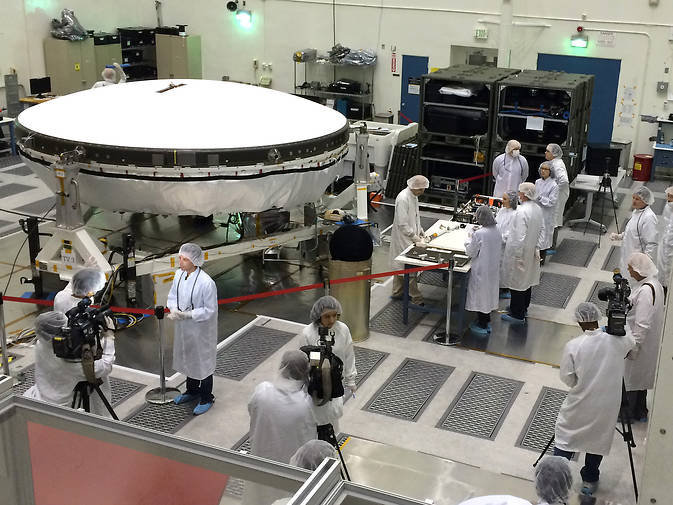
Mars has a tricky “in-between” environment, according to NASA. Unlike Earth, which has a dense atmosphere, or the moon, which has no atmosphere at all, Mars has too much atmosphere to allow heavy payloads to land with rockets alone, but too little atmosphere to make parachutes effective at slowing down spacecraft as they approach the ground.

As means to fix the problem, NASA on Tuesday showed off the fruits of its Low-Density Supersonic Decelerator (LDSD) program: essentially a combination balloon and flying saucer.
The craft, which is being developed in six- and eight-meter versions, will create friction as it spins, slowing a payload down enough for the 30.5 meter parachute to allow for a reasonable landing. The saucer is also equipped with a rocket to help in the process.
— Zen Vuong (@zenReport) March 31, 2015
Engineers at NASA's Jet Propulsion Lab in California put the saucer on a spin table to ensure it's balanced properly for flight.
In June, it’ll be launched into near-space from the Navy's Pacific Missile Range Facility in Kauai, Hawaii.
The drag system could be put into practice as early as 2020.

 Previous page
Previous page Back to top
Back to top







